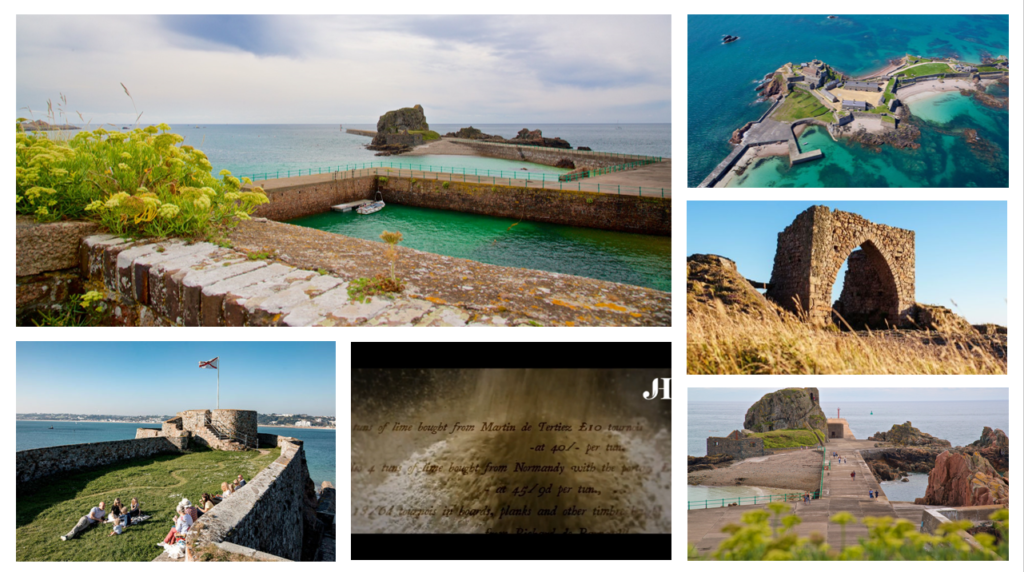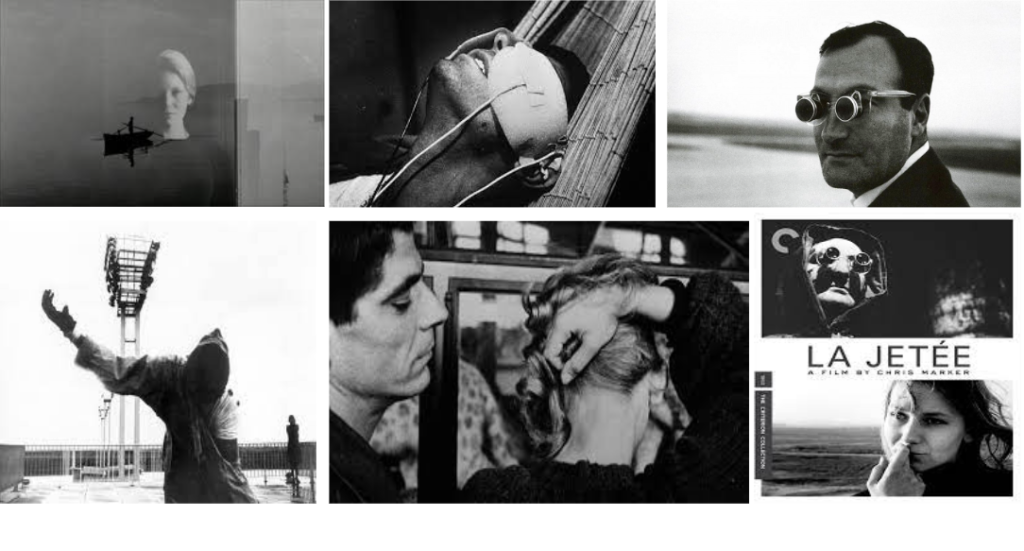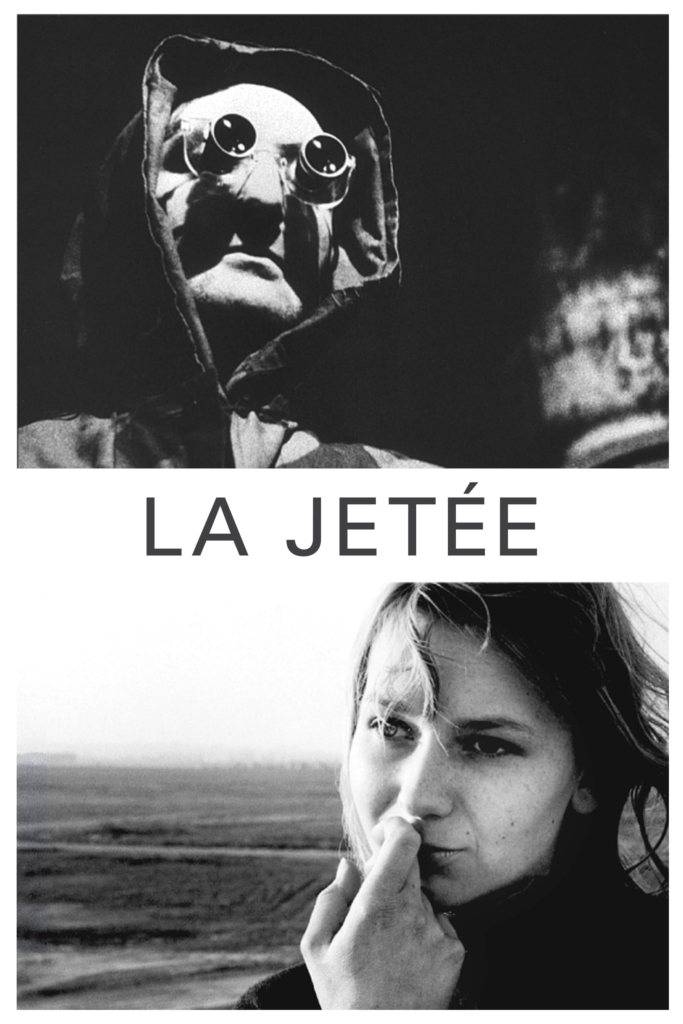For our film we don’t want to include too much factual history, but instead include archival history produced by previous Jersey Islanders.
We are going to use a letter written from Elina Hellyer, née Teele, to Patricia from her aunt of ‘Rockwood’, Mont Cochon. The letter contains news of the liberation of Jersey, the family and life under the German Occupation. We accessed the letter on the Jersey Heritage website.

The letter is six pages long so we will only use certain parts of the letter that link best to the war and what possibly when on at Elizabeth Castle. In our film we will put writing across the screen, and images of the actual letter in a low opacity over our film. We also might get someone to read the letter out and have it in the background.

History
the castle began being built in 1550, and named after Queen Elizabeth I in 1660 by Sir Walter Raleigh. The construction stared with the Upper Ward, later including Queen Elizabeth Gate installed in 1959. When the English Civil war broke out in 1642, Prince Charles came to Jersey and lived on the castle for 10 weeks to stay safe. After becoming king in 1650, he donated Jersey land in America, which was named New Jersey. In the same year (1651) that a windmill was built in-between Fort Charles and the Lower Ward, the Parliamentarian forces arrived in Jersey and bombarded the castle with mortars.
Elizabeth Castle was at its greatest in 1848, owning 64 cannons. The castle later became the States of Jersey’s property in 1923, when the army sold it to them for £1,500.
In the 18th Century, the Seven Years War took place. French prisoners were kept on the island. On the 6 January 1781, French troops, under Baron Phillipe de Rullecourt, arrived in St Helier. This was the next conflict the castle was involved in. The castle garrison (the soldiers guarding the Castle) was marooned. After the garrison refused to surrender, the French were finally defeated by the troops under Major Francis Peirson at the Battle of Jersey.
During WW2, the German forces added bunkers, searchlights and gun emplacements to Elizabeth castle. This was during the second year of the war in 1940. The castle was then occupied by roughly 100 German soldiers until Liberation day in May, 1945.
The castle is now owned by Jersey Heritage, and is a popular tourist attraction.
Moodboard of Visual Ideas
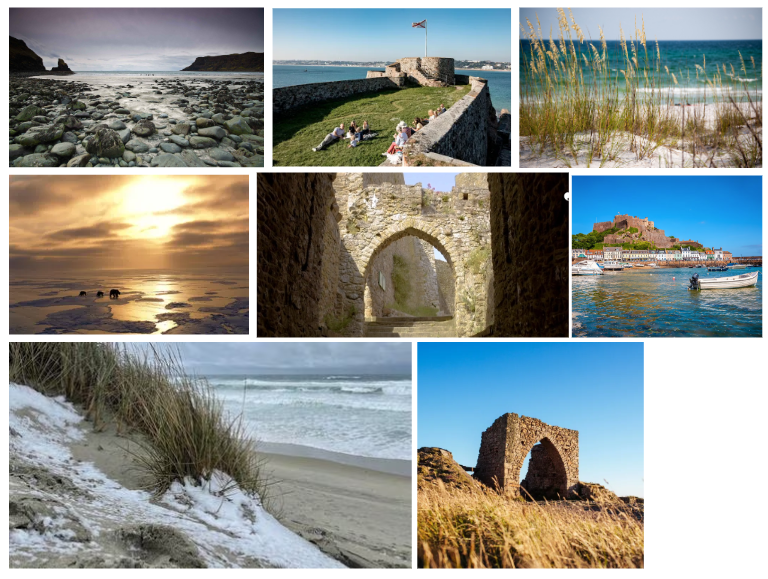
Story Board

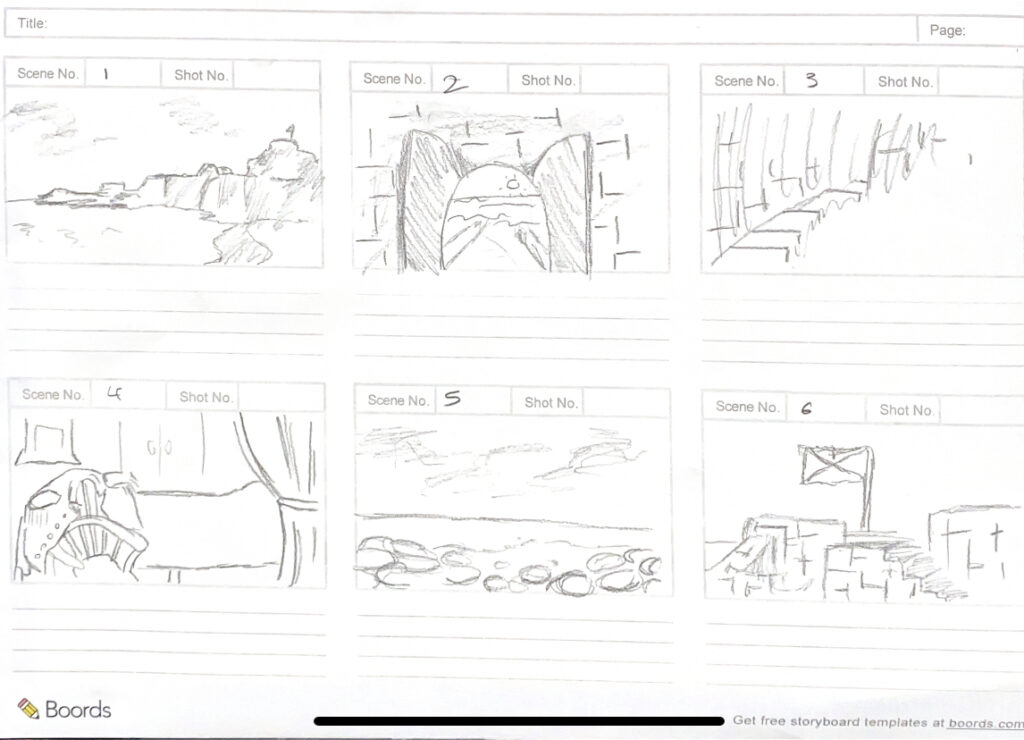

Bibliography
https://www.jerseyheritage.org/media/Schools/life%20in%20the%20castle.pdf



